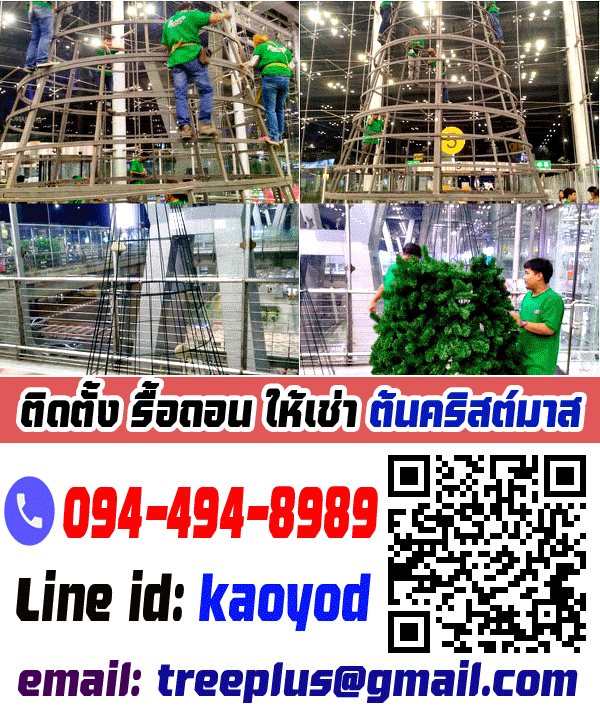




















































.png)







|
This section allows you to view all posts made by this member. Note that you can only see posts made in areas you currently have access to.
Messages - AntonBic
1
« เมื่อ: วันที่ 24 มิถุนายน 2024, 23:00:40 น. »
In this quick reference guide, we'll explore the basics of Java polymorphism and provide a cheat sheet to help you master this important concept. What is Polymorphism in Java? Polymorphism is one of the fundamental principles of object-oriented programming, and it allows objects to be treated as instances of their parent class. In Java, polymorphism is achieved through method overloading and method overriding. Method overloading allows a class to have multiple methods with the same name but different parameters, while method overriding allows a subclass to provide a specific implementation of a method that is already defined in its parent class. The Benefits of Polymorphism in Java There are several benefits to using polymorphism in Java, including code reusability, flexibility, and maintainability. By allowing objects to be treated as instances of their parent class, polymorphism makes it easier to write and maintain code, as well as to extend existing classes without modifying their code. Another benefit of polymorphism is that it allows for the creation of generic code that can be used with multiple classes. This can help reduce code duplication and make it easier to manage complex programs. Polymorphism Cheat Sheet Method Overloading: Method overloading allows a class to have multiple methods with the same name but different parameters. This is useful for providing multiple ways to interact with an object without having to define separate methods for each case. Method Overriding: Method overriding allows a subclass to provide a specific implementation of a method that is already defined in its parent class. This is useful for customizing the behavior of methods in subclasses. Dynamic Binding: Dynamic binding is the process by which the appropriate method implementation is determined at runtime based on the type of object. This allows for greater flexibility in how methods are called and executed. Abstract Classes and Interfaces: Abstract classes and interfaces are key features of Java that allow for the creation of polymorphic relationships between classes. Abstract classes provide a template for subclasses to follow, while interfaces define a set of methods that a class must implement. Conclusion Polymorphism is a powerful concept in Java that allows for greater code reusability, flexibility, and maintainability. By understanding the basics of polymorphism and how it is implemented in Java, you can become a more proficient and efficient Java developer. Use this cheat sheet as a quick reference guide to help you master polymorphism in your Java programming projects. Remember, practice makes perfect, so be sure to experiment with polymorphism in your own code to fully grasp its benefits and capabilities. Happy coding! Get all the information here: https://identitymanagementinstitute.org/future-identification-methods/ Mastering CSS Layouts: Best Practices for Using Object-Fit and Object-Position
2
« เมื่อ: วันที่ 24 มิถุนายน 2024, 21:35:13 น. »
important declaration. However, it is crucial to use it wisely to avoid causing unintended consequences in your code. When you use !important in your CSS rules, you are essentially telling the browser to prioritize that style above all others, regardless of specificity. While this can be handy in certain situations, such as when you need to quickly override a style without refactoring the entire stylesheet, it should be used sparingly. Overusing !important can lead to code that is difficult to maintain and debug. The Pros and Cons of Using !important One of the main benefits of using !important is that it provides an easy and quick way to override specific styles. This can be particularly useful in situations where you need to make a temporary change or fix a styling issue quickly. Additionally, !important can be helpful when working with third-party stylesheets or frameworks that you do not have direct control over. However, using !important too liberally can lead to a loss of control over your styles. It can create specificity wars within your codebase, making it challenging to predict which styles will be applied to certain elements. This can result in a higher likelihood of unintended styling changes and conflicts down the line. Best Practices for Using !important When using !important in your CSS, it is essential to follow some best practices to ensure that your code remains maintainable and scalable: Use it sparingly: Reserve the use of !important for situations where it is absolutely necessary, such as overriding third-party styles or fixing critical styling issues. Avoid stacking !important declarations: Nesting multiple !important rules can lead to specificity conflicts and make it challenging to debug styling issues. Organize your stylesheets: Keep your stylesheets well-organized and maintain a consistent coding style to minimize the need for !important declarations. Statistics on CSS Specificity According to a survey conducted by Stack Overflow, the vast majority of web developers use CSS as part of their development toolkit. Among those surveyed, 82% reported using CSS on a regular basis, highlighting the importance of understanding CSS specificity in web development. Another study by the WebAIM organization found that poor CSS specificity is one of the leading causes of accessibility issues on the web. By using !important indiscriminately, developers can inadvertently create barriers for users who rely on assistive technologies to navigate websites. Conclusion While !important can be a useful tool for overriding styles in CSS, it is crucial to use it wisely to avoid unintended consequences in your codebase. By following best practices and maintaining a disciplined approach to styling, you can ensure that your stylesheets remain maintainable and scalable in the long run. Remember, the goal of CSS specificity is to make your code more readable and maintainable, not to create unnecessary complexity. By using !important judiciously and following industry best practices, you can harness the power of CSS specificity effectively in your web development projects. Explore the complete details here: https://techov.us/iot-for-smart-homes/ Java Inheritance: Empowering Developers with Inheritance Patterns
3
« เมื่อ: วันที่ 24 มิถุนายน 2024, 18:27:03 น. »
If you're looking to revamp your home office, here are some trendy decor ideas to inspire you. Sleek Minimalism One of the hottest trends in home office decor is sleek minimalism. Minimalist design focuses on clean lines, simple color palettes, and clutter-free spaces. This minimalist approach can help create a calming and focused work environment, perfect for boosting productivity and creativity. Opt for a white desk, a few essential office supplies, and some greenery to add a touch of nature to your space. Industrial Chic If you're a fan of the industrial look, consider incorporating some industrial chic elements into your home office decor. Exposed brick walls, metal accents, and vintage-inspired furniture can give your space a trendy and edgy vibe. Industrial chic decor is all about mixing materials and textures, so don't be afraid to experiment with different elements to create a unique and stylish home office. Nature-Inspired Design Bringing the outdoors inside is another popular trend in home office decor. Nature-inspired design incorporates natural materials like wood, stone, and plants to create a warm and inviting work environment. Adding natural elements to your home office can help reduce stress, increase productivity, and improve your overall well-being. Consider adding a wooden desk, a few potted plants, and some nature-themed decor to bring a touch of the outdoors to your workspace. Smart Technology Integration Technology plays a significant role in modern home office decor. Smart technology integration allows you to create a seamless and efficient work environment. Invest in smart devices like voice-controlled assistants, adjustable standing desks, and ergonomic office chairs to enhance your productivity and comfort. Integrating smart technology into your home office can help streamline your workflow and make your workday more enjoyable. Personalized Touches Adding personalized touches to your home office decor can make your workspace feel more inviting and inspiring. Displaying photos, artwork, and personal items that reflect your personality and interests can help create a space that is uniquely yours. Personalized touches can also help boost your mood and motivation while working from home. Benefits of Trendy Home Office Decor Boosts productivity and creativity Creates a calming and focused work environment Improves overall well-being and reduces stress Enhances comfort and efficiency Reflects your personality and interests Conclusion Creating a trendy and functional home office space is essential for remote workers looking to stay productive and inspired. Whether you prefer sleek minimalism, industrial chic, nature-inspired design, or a mix of styles, incorporating trendy decor ideas into your home office can help elevate your workspace and enhance your work-from-home experience. By adding personalized touches and smart technology integration, you can create a space that is both stylish and practical, making working from home a more enjoyable and productive experience. Discover More: https://digitaltechz.com/the-impact-of-5g-technology-on-software-development/ Understanding CSS Units: A Designer’s Perspective
4
« เมื่อ: วันที่ 24 มิถุนายน 2024, 17:47:23 น. »
If you're new to yoga and looking to get started on your journey, here are some essential tips to help you navigate the world of yoga as a beginner. Start Slowly One of the most important tips for beginners is to start slowly and gradually build up your practice. It's not about how flexible or strong you are when you begin, but rather about listening to your body and practicing at your own pace. Pushing yourself too hard too soon can lead to injuries and burnout, so take it easy and be patient with yourself as you start your yoga journey. Focus on Your Breath One of the key principles of yoga is breathing. Proper breathing technique is crucial in yoga as it helps you connect your mind and body, improves focus, and can help you relax during challenging poses. Remember to focus on your breath throughout your practice, inhaling and exhaling slowly and deeply as you move through the poses. Find the Right Style for You With so many different styles of yoga to choose from, it can be overwhelming for beginners to know where to start. Some popular styles include Hatha, Vinyasa, and Bikram yoga, each offering a unique focus and approach to practice. Experiment with different styles and teachers to find one that resonates with you and that fits your goals and preferences. Use Props and Modifications Don't be afraid to use props such as blocks, straps, and bolsters to support your practice. Props can help beginners improve their alignment, flexibility, and stability in poses, making the practice more accessible and enjoyable. Additionally, don't be afraid to ask for modifications from your teacher if you're struggling with a particular pose. Stay Consistent Consistency is key when it comes to yoga practice. Try to establish a regular routine and practice at least a few times a week to see and feel the benefits of yoga. Even if you only have a few minutes to spare, a short yoga session can still be beneficial for your body and mind. Remember, progress in yoga is not about perfection but about showing up and doing the work. Listen to Your Body Perhaps the most important tip for beginner yoga practitioners is to listen to your body. Yoga is a practice of self-awareness, so pay attention to how your body feels during and after your practice. If a pose doesn't feel right or causes pain, back off and modify as needed. Your body knows best, so trust your intuition and practice with compassion for yourself. Benefits of Practicing Yoga Improves flexibility and strength Reduces stress and anxiety Enhances focus and concentration Boosts overall well-being Promotes mindfulness and self-awareness Conclusion Starting a yoga practice as a beginner can be both exciting and intimidating, but with these essential tips in mind, you can navigate the world of yoga with confidence and ease. Remember to start slow, focus on your breath, find the right style for you, use props and modifications as needed, stay consistent, and most importantly, listen to your body. By incorporating these tips into your practice, you'll be well on your way to reaping the countless benefits that yoga has to offer. Namaste! Explore Further: https://html5foundry.com/ai-content-generation-and-code-design/a-toolkit-of-helper-functions-for-error-handling-and-debugging-in-php/ Java Strings: Essential Concepts for Developers
5
« เมื่อ: วันที่ 24 มิถุนายน 2024, 16:26:03 น. »
This is the part where we explore how to create a unique and engaging user experience with CSS shadows. What are CSS Shadows? CSS shadows are a styling feature that allows developers to add shadow effects to elements on a web page. Shadows can be applied to text, images, buttons, and other elements, creating a sense of depth and realism. By using CSS shadows, developers can enhance the visual appeal of their websites and applications, making them more engaging for users. Benefits of Using CSS Shadows There are several benefits to using CSS shadows in web design. First and foremost, shadows can help create a sense of depth and dimension on a flat surface, making elements appear more realistic. Shadows can also be used to draw attention to specific elements on a page, such as buttons or calls to action. Additionally, shadows can be used to create visual hierarchy and improve the overall organization of a web page. By using shadows to differentiate between different elements, developers can make it easier for users to navigate and understand the content on a page. How to Create CSS Shadows Creating CSS shadows is easier than you might think. To add a shadow to an element, simply use the box-shadow property in your CSS code. The box-shadow property allows you to specify the horizontal and vertical offset of the shadow, as well as its blur radius and color. For example, to add a simple shadow to a text element, you could use the following CSS code: text-shadow: 2px 2px 4px rgba(0, 0, 0, 0.5); This code would add a 2px by 2px shadow with a blur radius of 4px and a semi-transparent black color to the text element. You can adjust the values to create different shadow effects and customize the appearance of your elements. Enhancing User Experience with CSS Shadows By incorporating CSS shadows into your web design, you can create a more visually appealing and engaging user experience. Shadows can help make elements on a page stand out, guide user focus, and improve overall readability. When used effectively, shadows can enhance the design of a website or application and make it more enjoyable for users to interact with. Conclusion In conclusion, CSS shadows are a powerful tool for enhancing the user experience of a website or application. By adding depth and dimension to elements, shadows can make a design more visually appealing and engaging for users. By following the tips and techniques outlined in this article, you can create a unique and engaging user experience with CSS shadows. View More Details: https://icure.com/blog/how-to-build-a-medical-software-infrastructure/ Boost Your Productivity with These Top Apps
6
« เมื่อ: วันที่ 24 มิถุนายน 2024, 14:57:28 น. »
This is the part where we explore how you can use these CSS properties to enhance the design of your website and improve user experience. The Power of CSS Object-Fit CSS object-fit is a property that allows you to control how an image or video is resized and positioned within its container. This powerful feature gives you the flexibility to create dynamic layouts without compromising on image quality. By using object-fit, you can specify how the content should be scaled, stretched, or cropped to fit the container. One of the key benefits of using object-fit is that it helps you maintain the aspect ratio of the content, ensuring that it looks visually pleasing on different devices and screen sizes. This is especially important in responsive web design, where images and videos need to adapt to various viewports without losing their quality. Benefits of CSS Object-Fit: Preserves aspect ratio of content Improves image quality on different devices Enhances responsive design capabilities Allows for flexible resizing and positioning Optimizing Layouts with CSS Object-Position In addition to object-fit, CSS object-position is another valuable property that can help you fine-tune the positioning of images and videos within their containers. By specifying the horizontal and vertical positions of the content, you can create visually appealing layouts that draw users' attention to key elements on the page. Object-position is particularly useful when you want to align images or videos in a specific way, such as centering them within a container or offsetting them to create a unique design. By using object-position, you can achieve precise control over the placement of content, resulting in a more polished and professional-looking website. Features of CSS Object-Position: Allows for precise alignment of content Enables creative layout designs Enhances user engagement with visual elements Provides flexibility in positioning images and videos Statistics on the Impact of Visual Design in Web Development According to a recent study, 38% of website visitors will stop engaging with a site if the content or layout is unattractive. This highlights the importance of investing in visual design to create a positive user experience and keep users engaged. By incorporating CSS object-fit and object-position into your development process, you can significantly improve the aesthetics and functionality of your website. Another statistic reveals that 94% of first impressions are design-related, emphasizing the significance of visual appeal in web development. By utilizing CSS properties like object-fit and object-position, you can enhance the overall look and feel of your site, making it more engaging and memorable for visitors. Designing stunning layouts with CSS object-fit and object-position is a game-changer for software developers looking to elevate their web design skills. By leveraging these powerful CSS properties, you can create visually appealing and responsive layouts that enhance user experience and drive engagement. Embrace the possibilities of CSS object-fit and object-position in your next web development project and watch your designs come to life! See the evidence by clicking this link: https://techedusuccess.com/why-algo-execution-occasions-have-by-no-means-been-extra-vital-within-the-age-of-ai-buying-and-selling/ The Importance of a Strong Back for Software Developers
7
« เมื่อ: วันที่ 24 มิถุนายน 2024, 11:41:10 น. »
Here are some of the best self-care practices for stress relief that you can incorporate into your daily routine. 1. Exercise Regularly Physical activity has been proven to reduce stress levels and improve overall mood. Whether you prefer going for a run, practicing yoga, or hitting the gym, finding an exercise routine that works for you can greatly benefit your mental health. Aim to exercise at least three times a week for optimal results. 2. Practice Mindfulness Mindfulness meditation is a powerful tool for reducing stress and anxiety. Taking a few minutes each day to focus on your breathing and be present in the moment can help calm your mind and improve your overall well-being. There are many apps and online resources available to help you get started with mindfulness meditation. 3. Get Adequate Sleep A lack of sleep can greatly impact your stress levels and overall productivity. Aim to get at least 7-8 hours of quality sleep each night to ensure that your body and mind are well-rested. Creating a bedtime routine and avoiding screens before bed can help improve your quality of sleep. 4. Set Boundaries It's important to set boundaries with work and personal commitments to avoid burnout. Learn to say no to extra tasks or projects that may overwhelm you, and prioritize your own well-being. Setting boundaries will help you maintain a healthy work-life balance and prevent stress from taking over. 5. Connect with Others Social support is essential for managing stress and improving mental health. Make an effort to connect with friends and loved ones on a regular basis, whether it's through phone calls, video chats, or in-person meetups. Building strong relationships can provide comfort and support during stressful times. 6. Take Breaks As a software developer, it's easy to get caught up in your work and forget to take breaks. However, frequent breaks can actually improve your productivity and reduce stress levels. Try implementing the Pomodoro technique, which involves working in short bursts with regular breaks in between. 7. Engage in Hobbies Having hobbies outside of work can help you relax and unwind after a long day. Whether you enjoy painting, playing music, or gardening, engaging in activities that bring you joy can help reduce stress and improve your overall well-being. Make time for your hobbies regularly to prioritize self-care. 8. Practice Gratitude Practicing gratitude has been shown to improve mental health and reduce stress levels. Take a few minutes each day to reflect on the things you're grateful for, whether it's your health, relationships, or accomplishments. Cultivating a sense of gratitude can help shift your mindset and reduce negative thinking patterns. Conclusion Self-care is essential for managing stress and maintaining a healthy work-life balance. By incorporating these self-care practices into your daily routine, you can improve your mental and physical well-being and reduce stress levels. Prioritize self-care and make time for activities that bring you joy and relaxation to ensure a happier and healthier life. See More Information: https://omnipilot.ai/blog/can-ai-write-code Incorporating Strength Training into Your Routine
8
« เมื่อ: วันที่ 24 มิถุนายน 2024, 11:01:04 น. »
This is the part where we delve into the world of online dating apps and explore the top options that are revolutionizing the dating scene. Convenience at Your Fingertips One of the biggest advantages of using online dating apps is the convenience they offer. With just a few taps on your smartphone, you can browse through a plethora of profiles and connect with individuals who share your interests and values. Gone are the days of awkward blind dates and chance encounters at bars – online dating apps allow you to take control of your love life and find compatible matches with ease. Industry Statistics Over 50 million people use online dating apps worldwide Online dating is the second most popular way for people to meet their significant others Online dating app usage has increased by 15% in the last year Personalized Matching Many online dating apps use sophisticated algorithms to match users based on their preferences and compatibility. By inputting your desired criteria such as age, location, and interests, the app can suggest potential matches that align with your dating goals. This personalized approach saves you time and energy by connecting you with individuals who are more likely to be a good fit. Benefits of Personalized Matching Increased chances of finding a compatible partner Save time by focusing on quality matches Reduce the frustration of sifting through incompatible profiles Enhanced Communication Features Online dating apps offer a variety of communication features that make it easy to interact with your matches. From instant messaging to video calls, these apps provide a platform for meaningful conversations that can help you get to know someone before meeting in person. Whether you prefer texting or talking on the phone, online dating apps cater to your communication style. Industry Statistics 72% of online daters prefer messaging over phone calls Virtual dating has become increasingly popular, with a 20% increase in video calls on dating apps Safety and Security Measures Concerns about safety and privacy are common when it comes to online dating. However, many dating apps have implemented stringent security measures to protect their users. Features such as verification checks, reporting mechanisms, and privacy settings help ensure a safe and enjoyable experience for all members. By prioritizing user safety, online dating apps provide a secure environment for meeting new people. Benefits of Safety Measures Protects users from catfishing and fake profiles Ensures a safe and respectful online dating experience Builds trust and credibility with users Overall, online dating apps have revolutionized the way people meet and connect with potential partners. By leveraging technology and innovation, these apps offer a convenient, personalized, and secure platform for finding love in the digital age. So why not give them a try and see how they can enhance your dating life? View More Details: https://edukeit.com/optimize-product-experiences-with-sprig-ai-driven-evaluation-platform/ 10 tips for a better night’s sleep10 Tips for a Better Night’s Sleep
9
« เมื่อ: วันที่ 24 มิถุนายน 2024, 09:39:25 น. »
Here's a beginner's guide to running to help you get started on the right foot. Benefits of Running Before diving into the specifics of how to start running, let's talk about some of the benefits of this form of exercise. Running can help improve your overall cardiovascular health, strengthen your muscles, and boost your mood by releasing endorphins. It's also a great way to burn calories and can help with weight loss goals. Additionally, running outdoors can provide a mental health boost by allowing you to connect with nature and reduce stress. Getting Started Before you lace up your running shoes, it's important to properly prepare for your run. Start by investing in a good pair of running shoes that provide support and cushioning to help prevent injury. You may also want to invest in moisture-wicking clothing to help keep you dry and comfortable during your run. It's also important to warm up before you start running by doing some dynamic stretches to loosen up your muscles. Building Your Endurance As a beginner, it's important to start slow and gradually build up your endurance. Start with a mix of walking and running intervals to help ease your body into this new form of exercise. As you become more comfortable, gradually increase the amount of time you spend running and decrease the amount of time you spend walking. This will help build your endurance and improve your overall fitness level. Setting Realistic Goals When starting a new running routine, it's important to set realistic goals for yourself. Whether you're looking to run a certain distance or improve your pace, setting goals can help keep you motivated and on track. Start by setting small, achievable goals and gradually work your way up to more challenging ones. Celebrate your accomplishments along the way to help stay motivated and inspired. Staying Consistent Consistency is key when it comes to running. Make a schedule and stick to it to help build a routine and form a habit. Whether you run in the morning before work or in the evening after dinner, find a time that works best for you and make it a priority. Consistency will help you see progress and improve your overall fitness level over time. Listening to Your Body One of the most important aspects of running is listening to your body. Pay attention to how you feel during and after your runs and adjust your training as needed. If you're feeling tired or sore, it's important to rest and allow your body time to recover. Pushing through pain can lead to injury and setbacks, so it's important to prioritize your body's needs. Joining a Running Community Running can be a solo sport, but joining a running community can help provide support, motivation, and accountability. Whether you join a local running group or participate in virtual running challenges, connecting with other runners can help keep you inspired and engaged. You may also pick up tips and tricks from more experienced runners that can help improve your own training. Conclusion Running is a great form of exercise that offers a wide range of health benefits. Whether you're looking to improve your cardiovascular fitness, lose weight, or simply enjoy the outdoors, running can be a fun and rewarding activity. By starting slow, setting realistic goals, staying consistent, and listening to your body, you can build up your endurance and become a stronger, healthier runner. So lace up your shoes, hit the pavement, and start reaping the rewards of a regular running routine! Learn how it works here: https://wik.co.kr/master4/828108 The benefits of a digital detox for mental clarity and focus
10
« เมื่อ: วันที่ 24 มิถุนายน 2024, 08:12:21 น. »
Px (Pixels) Px is perhaps the most commonly used unit of measurement in CSS. It represents a fixed-length unit that is used to define the size of an element on a webpage. One pixel is equal to one dot on the display screen, making it a reliable unit for specifying exact dimensions. Using pixels can be beneficial when you want to ensure precise control over the size of text, images, and other elements on a webpage. However, it's essential to keep in mind that using pixels for layout dimensions can result in a lack of responsiveness on different devices with varying screen sizes. Em Em is a relative unit of measurement in CSS that is based on the font size of the parent element. One em is equal to the current font size of the element being styled. Using ems can help create a more flexible and scalable layout, as elements will adjust their size based on the font size of their parent element. One of the benefits of using ems is that they make it easier to create designs that are accessible and responsive. By defining dimensions relative to the font size, you can ensure that your website adapts well to different screen sizes and user preferences. Rem Rem stands for root em and is similar to the em unit, with one key difference—it is based on the font size of the root element (typically the <html> element) rather than the parent element. This can be advantageous when you want to set base font sizes that apply across the entire website. Using rem units can help maintain consistency in your design, as changes to the root font size will cascade down to all other elements on the page. This makes it easier to create a cohesive and harmonious layout without having to adjust individual font sizes manually. Pt (Points) Points are another fixed-length unit of measurement in CSS, with one point equal to 1/72 of an inch. While not as commonly used as pixels, points are often favored when it comes to printing stylesheets or when precise physical measurements are required. When specifying font sizes in points, it's essential to consider that they may appear differently on screen compared to in print. Points are device-independent units, meaning they will not scale with the screen size, so it's crucial to test how your design looks across various devices. Conclusion Understanding different CSS units and when to use them is crucial for creating visually appealing and responsive websites. By leveraging units such as Pt, Px, Em, and Rem effectively, you can build layouts that are flexible, scalable, and accessible across various devices. Whether you're looking to fine-tune the typography of your website or ensure consistent spacing between elements, mastering CSS units will elevate your web development skills and enhance the user experience. Experiment with different units to discover which ones work best for your design needs and create a website that stands out in the digital landscape. Learn more at this link: https://www.luaaksolutions.com/justcall-and-pipedrive-integration/ Understanding Java Operands and Operators Basics
11
« เมื่อ: วันที่ 24 มิถุนายน 2024, 04:42:03 น. »
Here are the top 5 books that every entrepreneur should read: 1. The Lean Startup by Eric Ries Eric Ries's The Lean Startup is a must-read for any entrepreneur looking to launch a successful business. In this book, Ries introduces the concept of the Lean Startup methodology, which focuses on creating a business that is agile, flexible, and able to adapt to change quickly. By following the principles outlined in this book, entrepreneurs can minimize waste, maximize efficiency, and increase their chances of success. 2. Zero to One by Peter Thiel Peter Thiel's Zero to One is another essential read for entrepreneurs. Thiel, one of the co-founders of PayPal and an early investor in Facebook, shares his insights on how to build a successful startup from scratch. This book is filled with valuable advice on how to create a unique product or service that disrupts the market and builds a successful business from the ground up. 3. The 4-Hour Workweek by Tim Ferriss Tim Ferriss's The 4-Hour Workweek is a game-changer for entrepreneurs who are looking to achieve more in less time. In this book, Ferriss explains how to prioritize tasks, outsource work, and automate processes to create a more efficient and productive work routine. By following Ferriss's advice, entrepreneurs can reduce their workload and focus on what truly matters in their businesses. 4. Start with Why by Simon Sinek Simon Sinek's Start with Why is an inspirational book that explores the importance of having a clear sense of purpose in business. Sinek argues that successful companies start with a strong sense of why they do what they do, rather than focusing solely on what they do or how they do it. This book is a great read for entrepreneurs who want to create a business that is driven by passion and purpose. 5. Good to Great by Jim Collins Jim Collins's Good to Great is a classic business book that provides valuable insights on how companies can go from being good to great. Collins and his research team studied hundreds of companies to identify the key factors that differentiate successful companies from their mediocre counterparts. This book is a must-read for entrepreneurs who want to take their businesses to the next level and achieve long-term success. Reading is a powerful tool for entrepreneurs to gain new perspectives, learn from the experiences of others, and stay inspired on their entrepreneurial journey. By reading these top 5 books, entrepreneurs can gain valuable insights and advice on how to build a successful business, overcome challenges, and achieve their goals. Find out how by following this link: https://blog.planmyapps.com/can-you-turn-your-shopify-store-into-an-app/ Exploring Advanced Techniques in CSS Inheritance
12
« เมื่อ: วันที่ 24 มิถุนายน 2024, 03:56:09 น. »
In Java, abstraction is achieved through the use of design patterns that help streamline the development process and produce clean, efficient code. What is Abstraction in Java? Abstraction in Java is the process of hiding implementation details and showing only essential features of an object. This allows developers to focus on the functionality of the code without getting bogged down in the nitty-gritty details of how it works. By using abstraction, developers can create modular and extensible code that is easier to understand and maintain. One of the key design patterns used to implement abstraction in Java is the Factory Method pattern. This pattern allows developers to define an interface for creating objects, but lets subclasses decide which class to instantiate. By using the Factory Method pattern, developers can create code that is more flexible and easier to extend, reducing the amount of code duplication and improving code readability. Benefits of Abstraction in Java There are several benefits to using abstraction in Java. One of the main advantages is that it allows developers to break down complex systems into smaller, more manageable components. This makes code easier to understand, modify, and debug, leading to a more efficient development process. Abstraction also promotes code reuse, as developers can create generic interfaces that can be implemented by multiple classes. This reduces the amount of duplicate code in a project, making it easier to maintain and update. Additionally, abstraction helps improve the overall design of a system, making it more scalable and adaptable to changing requirements. Design Patterns for Abstraction in Java There are several design patterns that are commonly used to implement abstraction in Java. One of the most popular patterns is the Strategy pattern, which allows developers to define a family of algorithms, encapsulate each one, and make them interchangeable. By using the Strategy pattern, developers can create code that is more modular and flexible, allowing for easy integration of new features and functionality. Another design pattern commonly used for abstraction in Java is the Observer pattern. This pattern defines a one-to-many dependency between objects, so that when one object changes state, all its dependents are notified and updated automatically. By using the Observer pattern, developers can create code that is more loosely coupled, reducing the dependencies between objects and improving code maintainability. Conclusion Abstraction is a powerful concept in Java that allows developers to create modular, extensible code that is easier to maintain and update. By using design patterns like the Factory Method, Strategy, and Observer patterns, developers can streamline the development process and produce clean, efficient code that is scalable and adaptable to changing requirements. By leveraging the benefits of abstraction, developers can create software that is not only functional, but also well-designed and easy to work with. So next time you're designing a Java application, consider using abstraction and design patterns to make your code more modular and extensible. Your future self (and your team) will thank you! Access the Site: https://www.financemci.online/2024/05/FINANCE_0113237442.html Leveraging CSS Background Properties for Print Design
13
« เมื่อ: วันที่ 24 มิถุนายน 2024, 02:30:15 น. »
One of the most effective ways to achieve this is by using CSS media queries. What are CSS Media Queries? CSS media queries allow you to apply specific styles based on the characteristics of the device or browser that is being used to view the website. This means that you can create responsive designs that adapt to different screen sizes, resolutions, and orientations. Benefits of Using CSS Media Queries Improved User Experience: By using CSS media queries, you can create a seamless and user-friendly experience for all users on any device. Increased Engagement: A responsive design is more likely to keep users on your website for longer, leading to higher engagement rates. Boosted SEO: Search engines prioritize mobile-friendly websites, so using CSS media queries can improve your website's search engine rankings. Cost-Effective: Instead of creating multiple versions of your website for different devices, you can use CSS media queries to make your website responsive. Key Features of CSS Media Queries 1. Viewport Width and Height One of the most common uses of CSS media queries is to set styles based on the viewport width and height of the device. This allows you to create designs that adapt to different screen sizes. 2. Device Orientation You can also use CSS media queries to apply styles based on the orientation of the device, whether it's in portrait or landscape mode. This is useful for adjusting layouts and designs accordingly. 3. Pixel Density CSS media queries can be used to target devices with high pixel density, such as Retina displays. This allows you to provide higher quality images and graphics for these devices. Best Practices for Using CSS Media Queries Start with a Mobile-First Approach: Begin by designing for mobile devices and then use media queries to enhance the design for larger screens. Test on Multiple Devices: Make sure to test your website on various devices to ensure that it looks great across all screen sizes. Use Relative Units: Instead of using fixed units like pixels, consider using relative units like percentages or ems for more flexible designs. Keep Styles Simple: Avoid adding too many complex styles in your media queries, as it can lead to bloated code and slower loading times. By incorporating CSS media queries into your web design process, you can create beautiful and responsive designs that provide a seamless experience for users on any device. If you need assistance with implementing CSS media queries or other web development services, contact us today! Access the Site: https://menalpartners.com/the-role-of-artificial-intelligence-in-outsourcing/ Top Java Packages for Artificial Intelligence
14
« เมื่อ: วันที่ 24 มิถุนายน 2024, 01:02:51 น. »
CSS transitions allow developers to animate changes in CSS properties smoothly over a specified duration. This can be used to create delightful interactions that engage users and evoke emotions. By incorporating CSS transitions into your web design, you can add a layer of polish and sophistication that sets your application apart from the competition. Benefits of Using CSS Transitions Improved User Engagement: Animations created with CSS transitions can capture users' attention and guide them through the user interface. By adding subtle animations to buttons, menus, and other elements, you can create a more immersive and engaging user experience. Enhanced Visual Appeal: CSS transitions allow you to add visual flair to your web design. Whether it's a subtle fade-in effect or a dynamic hover animation, transitions can make your application more visually appealing and memorable to users. Increased Usability: Animations created with CSS transitions can help users understand how to interact with your application. By providing visual feedback for actions such as button clicks or form submissions, transitions can improve usability and reduce user errors. Brand Differentiation: By incorporating unique animations and transitions into your web design, you can establish a distinct brand identity that resonates with your target audience. Consistent use of animations can help reinforce your brand's personality and values. Statistics on the Impact of CSS Transitions According to a survey conducted by Adobe, 39% of users will stop engaging with a website if images take too long to load or if the layout is unattractive. This underscores the importance of creating visually appealing and interactive web experiences to retain users and drive engagement. Research also shows that 88% of online consumers are less likely to return to a website after a bad experience. By leveraging CSS transitions to enhance user experience, you can increase the likelihood of retaining users and encouraging repeat visits to your application. Best Practices for Implementing CSS Transitions Keep It Simple: Avoid overwhelming users with excessive animations. Focus on using transitions strategically to enhance key interactions and guide users through your application. Be Consistent: Maintain a consistent animation style and timing throughout your application to provide a cohesive user experience. Consistency can help users navigate your application more easily and understand how to interact with different elements. Test and Iterate: Utilize A/B testing and user feedback to fine-tune your CSS transitions. By monitoring user behavior and preferences, you can continuously optimize your animations to better meet the needs and expectations of your target audience. Optimize Performance: Be mindful of performance considerations when implementing CSS transitions. Minimize the use of complex animations and prioritize performance optimization to ensure smooth and seamless user interactions across devices and browsers. At our software development company, we are committed to utilizing cutting-edge technologies such as CSS transitions to create immersive and emotionally engaging web experiences for our clients. By harnessing the potential of CSS transitions, we can help you elevate your digital presence and connect with your target audience on a deeper level. Contact us today to learn more about how we can leverage CSS transitions to enhance your web application. Uncover More: https://www.thealien.design/insights/insurtech-website-ux-challenges Understanding the Relationship Between Elements in the CSS Box Model
15
« เมื่อ: วันที่ 23 มิถุนายน 2024, 21:55:59 น. »
One effective way to achieve this is through the use of CSS columns. What are CSS Columns? CSS columns allow web developers to create multi-column layouts on web pages, making content more visually appealing and easier to read. By dividing text into multiple columns, users can quickly scan through content and find the information they need without becoming overwhelmed by a wall of text. With the help of CSS columns, developers can create responsive designs that adapt to different screen sizes, providing a seamless user experience across various devices. This flexibility is particularly important in today's mobile-first world, where users access websites on a wide range of devices, from smartphones to tablets to desktop computers. Benefits of Using CSS Columns Improved Readability: By breaking up long blocks of text into multiple columns, users can easily scan through content and find what they're looking for. Enhanced User Experience: A well-designed multi-column layout can make a website more visually appealing and engaging, keeping users on the page longer. Increased User Engagement: Studies have shown that users are more likely to engage with content that is presented in an attractive and organized manner. Statistics on User Engagement According to a study by Nielsen Norman Group, users typically only read about 20% of the text on a web page. This highlights the importance of presenting information in a concise and engaging way to capture the attention of users. Furthermore, research has shown that websites with well-designed layouts and typography have higher conversion rates and lower bounce rates, indicating that user engagement plays a significant role in the success of a website. Best Practices for Implementing CSS Columns When implementing CSS columns on a website, there are a few best practices to keep in mind: Use Responsive Designs: Ensure that your multi-column layout is responsive and adapts to different screen sizes for a seamless user experience. Keep Columns Consistent: Maintain a consistent column width and spacing to create a visually pleasing layout. Avoid Overcrowding: Don't cram too much content into each column, as this can overwhelm users and make it difficult for them to read. By following these best practices, you can create a visually engaging and user-friendly website that encourages users to stay on the page longer and interact with your content. Conclusion CSS columns are a powerful tool for improving user engagement on websites by creating visually appealing and easy-to-read layouts. By implementing multi-column designs, businesses can captivate their audiences and keep them coming back for more. With the right strategies in place, CSS columns can help businesses enhance the user experience and ultimately drive conversions. Learn more at this link: https://esoftskills.ie/ai-in-marketing-enhancing-customer-engagement-and-personalization/ Creating Dynamic Hover Effects with CSS Positioning
| 










%20TPCC2.jpg)



















































|
|












































































.png)
















%20TPCC2.jpg)


















































